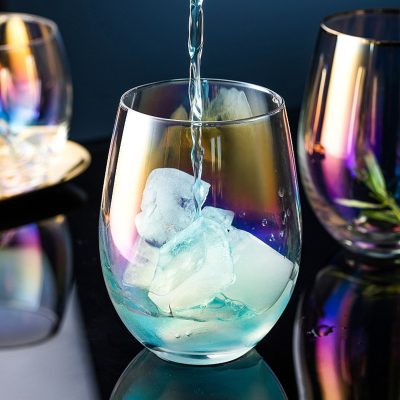See how the cup shape affects the taste of wine, what are the knowledge?
Have you noticed that when you drink wine, you choose different glasses, tall, short, fat and thin. There is no doubt that the vessel in which the wine is served can greatly affect your emotional senses and even create a prejudice against the wine itself. In fact, the small wine glass is also asked by the university. So, what knowledge does it have to see how the cup shape affects the taste of wine?
Many wine glass manufacturers are based on the best experience people have when tasting wine on different parts of the tongue. For example, the sides of the tongue are more sensitive to acidity, and the back of the tongue is more sensitive to bitterness, so high-acid wines should go directly into the throat to avoid feeling too much acidity on both sides of the tongue.
Tannin wines are more bitter, so avoid feeling too much bitterness on the back of your tongue, allowing the wine to transform your mouth and cover all areas of your mouth before swallowing.
The manufacturer’s theory is: the brain is lazy, and the front row is often more impressive, so the cup shape is designed in this direction to give the taster a better experience.
cup body
The cup body and the cup wall are the most important parts of the wine glass.
The bottom of the cup is a round bowl, which is a Bordeaux glass. The body of the cup is smaller and gradually narrows to the rim. The narrow glass body is close to a budding tulip, which can avoid overflowing when the wine is shaken. The funnel-shaped cup can not only gather the aroma of the wine, but also the entrance reaches the middle of the tongue first, and then the front and sides of the tongue. At this time, the front image of the brain is the sweetness of the wine, which is also a wine that is more easily absorbed. Neglected, hidden features, in other words, the wine entrance feels more moving.
The big belly cup is what we often call the Burgundy cup, which is characterized by softening the wine. The larger the cup is, the slower the flow rate of the wine will be, and the wine drunk from the Burgundy cup will touch the tip of the tongue earlier, that is, sweetness. Sensitive areas, this sweetness softens tannins, minerality and acidity. Obviously, high-tannin wines are better drunk in a pot-bellied glass, which acts as a small decanter, allowing the wine to get in contact with more oxygen and soften the tannins.
There is also a sommelier cup, which is designed to increase the contact between wine and oxygen. The origin is the junction of the neck and the cup body, and the curve is upward, not a normal U-shaped cup body.
Cup rim
The rim is the second most important part of a wine glass. From an aesthetic point of view, many people think that it is better to have a round rim that is cut and polished and touches the lips, so that the wine can flow into the mouth gently. However, such cups are prone to breakage, especially of thin-walled, hand-blown types.
The smaller the rim, the slower the aroma of the wine, the more concentrated the aroma, and the more pleasant it will be. High acidity wine, drink with a small glass mouth, will increase the taste, make the wine go directly into the throat, and avoid too much sour taste on both sides of the tongue.
The neck and bottom are designed for aesthetics. The neck keeps the wine away from the influence of human hand temperature. The short neck cup means that the hand part may touch the body of the cup. The long neck cup is fragile but looks more elegant.

















